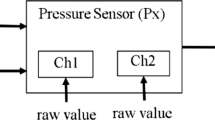Abstract
Formal specification precisely documents expected behaviors of the system under construction, which provides a firm foundation for ensuring software quality and facilitating software maintenance. However, describing software requirements in formal specifications remains a challenge for practitioners and becomes one of the obstacles toward widespread use of formal methods in industry. To deal with the problem, this paper describes an interactive tool that assists designers in software requirement formalization. It retrieves informal requirements from the designer and automatically generates the corresponding formalization result. Based on a knowledge base stored in XML files, the tool implements a core engine for producing comprehensible guidance. By conducting a case study on a banking system, the effectiveness of the tool is shown.
Access this chapter
Tax calculation will be finalised at checkout
Purchases are for personal use only
Preview
Unable to display preview. Download preview PDF.
Similar content being viewed by others
References
Raymond Abrial, J.: Formal methods: Theory becoming practice. Journal of Universal Computer Science, 619–628 (2007)
Woodcock, J., Larsen, P.G., Bicarregui, J., Fitzgerald, J.: Formal methods: Practice and experience. ACM Comput. Surv. 41, 19:1–19:36 (2009)
Almeida, J.: An overview of formal methods tools and techniques. Springer (2011)
Wang, X., Liu, S., Miao, H.: A pattern system to support refining informal ideas into formal expressions. In: Dong, J.S., Zhu, H. (eds.) ICFEM 2010. LNCS, vol. 6447, pp. 662–677. Springer, Heidelberg (2010)
Liu, S.: Formal Engineering for Industrial Software Development. Springer (2004)
Liu, S., Offutt, A., Ho-Stuart, C., Sun, Y., Ohba, M.: SOFL: A formal engineering methodology for industrial applications. IEEE Transactions on Software Engineering 24, 24–45 (1998)
Liu, S.: Formal engineering for industrial software development – an introduction to the SOFL specification language and method. In: Davies, J., Schulte, W., Barnett, M. (eds.) ICFEM 2004. LNCS, vol. 3308, pp. 7–8. Springer, Heidelberg (2004)
Liu, S.: Integrating top-down and scenario-based methods for constructing software specifications. Inf. Softw. Technol. 51, 1565–1572 (2009)
Ding, J., Mo, L., He, X.: An approach for specification construction using property-preserving refinement patterns. In: Proceedings of the 2008 ACM Symposium on Applied Computing, SAC 2008, pp. 797–803. ACM, New York (2008)
Stepney, S., Polack, F., Toyn, I.: An outline pattern language for Z: Five illustrations and two tables. In: Bert, D., Bowen, J.P., King, S., Waldén, M. (eds.) ZB 2003. LNCS, vol. 2651, pp. 2–19. Springer, Heidelberg (2003)
Vadera, S., Meziane, F.: From English to formal specifications. The Computer Journal 37, 753–763 (1994)
Konrad, S., Cheng, B.H.C.: Real-time specification patterns. In: Proceedings of the 27th International Conference on Software Engineering, ICSE 2005, pp. 372–381. ACM, New York (2005)
Author information
Authors and Affiliations
Editor information
Editors and Affiliations
Rights and permissions
Copyright information
© 2013 Springer-Verlag Berlin Heidelberg
About this paper
Cite this paper
Wang, X., Liu, S. (2013). Development of a Supporting Tool for Formalizing Software Requirements. In: Liu, S. (eds) Structured Object-Oriented Formal Language and Method. SOFL 2012. Lecture Notes in Computer Science, vol 7787. Springer, Berlin, Heidelberg. https://doi.org/10.1007/978-3-642-39277-1_5
Download citation
DOI: https://doi.org/10.1007/978-3-642-39277-1_5
Publisher Name: Springer, Berlin, Heidelberg
Print ISBN: 978-3-642-39276-4
Online ISBN: 978-3-642-39277-1
eBook Packages: Computer ScienceComputer Science (R0)




